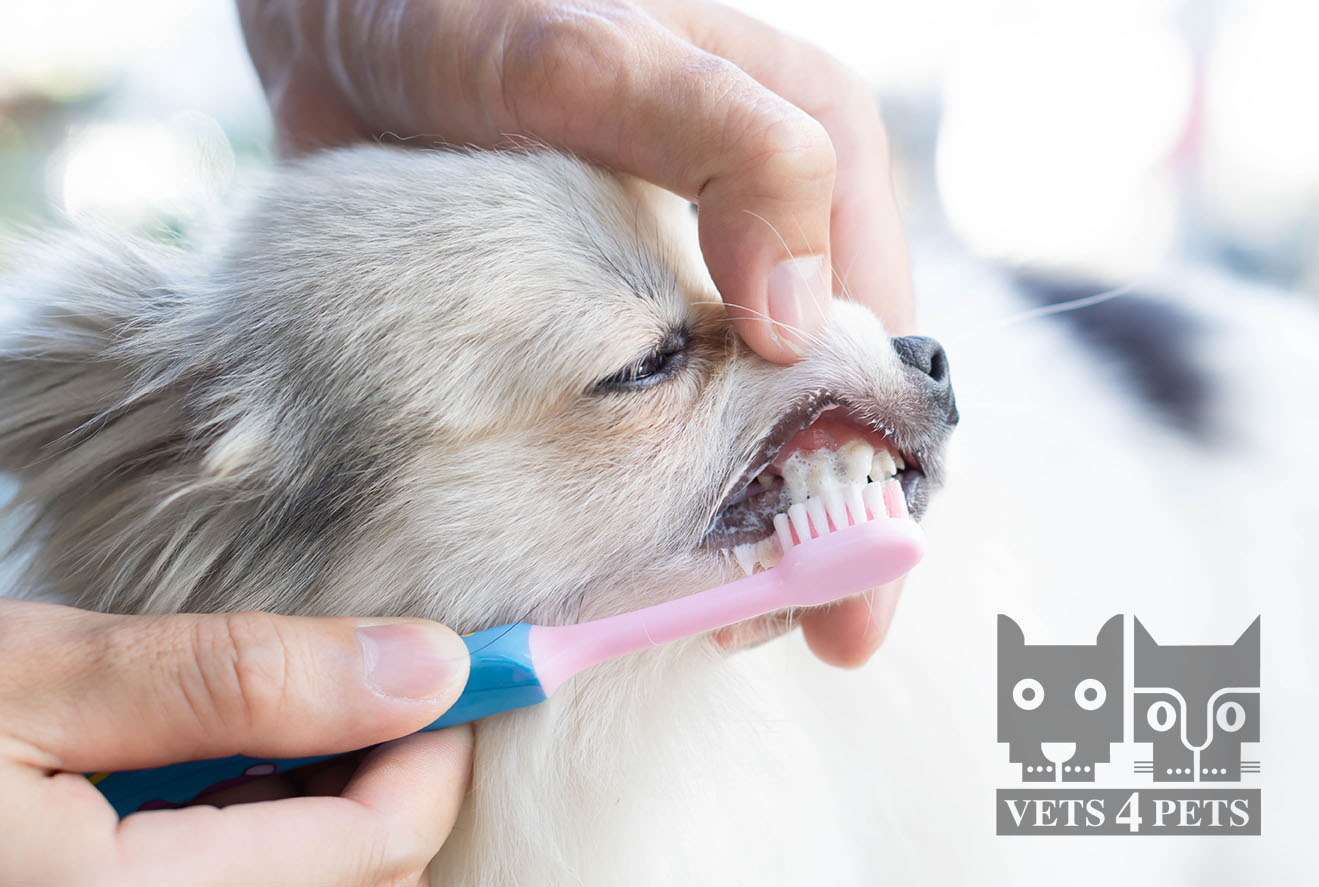More Than Just Bad Breath: Why Your Pet's Dental Health Matters

Ever been greeted by a less-than-pleasant whiff when your beloved dog or cat yawns or licks your face? While it might seem like just “dog breath” or “cat breath,” bad odor is often the first sign of something more serious: dental disease.
Just like humans, pets can suffer from a range of oral health issues, from plaque and tartar buildup to painful gum disease and even tooth loss. And here’s the critical part: dental problems don’t just stay in the mouth. They can significantly impact your pet’s overall well-being, potentially leading to serious health complications affecting the heart, kidneys, and liver.
The Silent Threat: What is Dental Disease?
Dental disease in pets typically starts when bacteria, saliva, and food particles combine to form plaque on the teeth. If this plaque isn’t removed, it hardens into tartar, a rough, brownish substance that sticks firmly to the tooth surface.
Tartar then irritates the gums, leading to gingivitis (inflammation of the gums). If left untreated, gingivitis can progress to periodontal disease, a painful and irreversible condition where the infection spreads below the gumline, damaging the supporting structures of the teeth and potentially leading to tooth loss.
Signs your pet might have dental disease include:
- Bad breath (halitosis) – often the most obvious sign.
- Red, swollen, or bleeding gums.
- Yellow or brown tartar buildup on the teeth.
- Difficulty eating, dropping food, or favouring one side of the mouth.
- Pawing at the mouth or rubbing their face.
- Drooling.
- Weight loss due to pain when eating.
- Irritability or changes in behavior.
Our Top Tips for a Healthier Pet Mouth:
The good news is that dental disease is largely preventable and manageable with a proactive approach.
- At-Home Care: Daily Tooth Brushing is King! This might sound daunting, but introducing daily tooth brushing with pet-specific toothpaste (never human toothpaste!) is the gold standard for at-home dental care. It takes time and patience to get your pet accustomed to it, but the effort makes a huge difference in preventing plaque and tartar buildup. Start slow, make it a positive experience with praise and treats, and aim for consistency.
Beyond brushing, certain dental chews and water additives can also help reduce plaque, but they are generally most effective when used as part of a comprehensive dental routine, not as a standalone solution. Look for products with the Veterinary Oral Health Council (VOHC) seal of acceptance. - Professional Cleanings: The Essential Deep Dive Even with diligent at-home care, plaque and tartar will eventually build up below the gumline and in hard-to-reach areas. This is where regular professional dental cleanings become absolutely vital.
Performed under general anaesthesia for your pet’s safety and comfort, a professional cleaning allows our veterinary team to: - Thoroughly scale and polish all tooth surfaces, including below the gumline.
- Perform a comprehensive oral examination to identify any hidden issues like fractured teeth, abscesses, or growths.
- Take dental X-rays to assess the health of the tooth roots and jawbone, which are invisible to the naked eye.
- Address any problematic teeth, such as extractions if necessary, to alleviate pain and prevent further infection.
- These cleanings are not just cosmetic; they are a critical veterinary procedure that can extend your pet’s lifespan and improve their quality of life.
Don’t Let Dental Pain Impact Your Furry Friend!
If you’ve noticed any of the signs of dental disease in your pet, or if it’s been a while since their last dental check-up, please don’t hesitate. Addressing dental problems early can prevent significant pain for your pet and save you greater expense down the line.
📞 Contact us today to discuss your pet’s dental health and schedule a consultation. Let’s work together to give your beloved companion a sparkling smile and a healthier, happier life!

Recent Comments